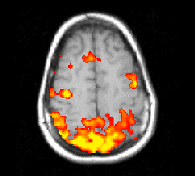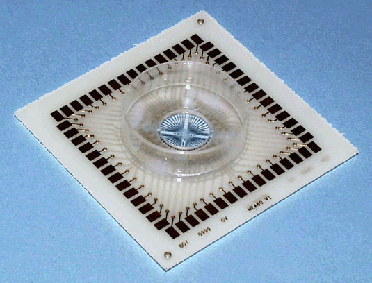Neural Engineering (BIOEN 498C) homepage
When: Fall 2011, WF 3:30-4:50 P.M.
Where: More Hall Rm 220 except visits to UW Neural Engineering labs.
Handouts: provided as PDFs in this website at least one class day before the lectures.
Assignments: online essays given at the end of each section or sub-section.
Grading: assignments (75% of grade), midterm (25% of grade), and class participation (+ 0.1 points over 4).
Pre-requisites: None specifically.
Textbook: (not mandatory, but it's a good one for ~30% of the material) "Neural Engineering" by Bin He (ed.), Kluwer Academic / Plenum Press. There is one copy at the Engineering Library. If "neuron" and "ion channel" do not mean anything to you, this course might be a little difficult for you - but you are welcome to take it! I recommend starting with Brainfacts, a quick introduction to the nervous system, and moving on to more general textbooks such as "Principles of Neural Science" by Kandel/Schwartz/Jessell (Fourth ed.).
Important note for disabled individuals: If you would like to request academic accommodations due to a disability, please contact Disabled Student Services, 448 Schmitz, (206) 543-8924 (V/TTY). If you have a letter from Disabled Student Services indicating you have a disability that requires academic accommodations, please present the letter to me so we can discuss the accommodations you might need for the class.

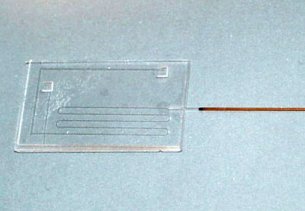
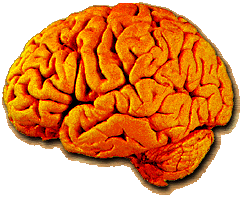
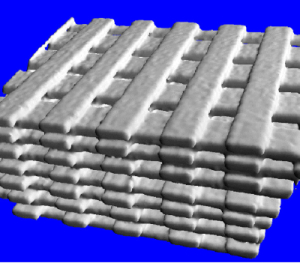
Broad description: This course introduces students to the broad field of Neural Engineering. The course is approximately divided in four sections: 1) Technologies for monitoring neural activity in vivo (whole brain, from human to small animals) and in vitro (from slices to dissociated cells); discussion of challenges associated with device portability, accessibility of stimulation site, and stimulation scale; wireless EEG, fMRI, microfabricated electrode arrays (MEAs), patch clamp electrophysiological recordings; 2) Devices for replacing or restoring neural function: implantable electrodes, brain-computer interfaces (BCI), cochlear implants, artificial retina, artificial nose; 3) Devices for in-vitro neuroscience: neuronal micropatterns, microfluidic systems, iontophoresis, patch clamp chips; 4) Computational and imaging approaches: The BrainBow project, the UW Human Brain project.
Tentative
Calendar (check later, it may change!):
|
SEPTEMBER |
||
|
Tuesday
(lab) |
Wednesday |
Friday |
|
|
28 -- First day: Course basics; Syllabus; Flash Introduction to the
Nervous System: Anatomy; The Neuron; See slides in PDF
(or in PPT)
and "BrainFacts" |
30 -- Flash Introduction to the Nervous System (cont.): Electrical
Excitability; Microelectrode arrays, patch clamp technique. See slides in PDF
(or in PPT)
and "BrainFacts" |
|
OCTOBER |
||
|
Homeworks |
Wednesday |
Friday |
|
|
||
|
5 -- SECTION 1. Monitoring neural activity: Neural stimulation
(general principles); implantable microelectrodes. See slides in PDF
or in PPT. |
7 -- SECTION 1. Monitoring neural activity: Wireless communication devices
for neural recording and stimulation (Visit to Prof. Brian Otis lab, EE). See slides in PDF or in PPT and Otis lab's website. |
|
|
|
12 -- SECTION 1. Monitoring neural activity: EEG.
Visit to Dr. John Oakley's lab
(Neurology); EEG of a volunteer doing cognitive tasks. See slides in PDF or in PPT. |
14 -- SECTION 1. Monitoring neural activity. Brain imaging; fMRI. See slides in PDF or in PPT. |
|
19 -- SECTION 1. Monitoring neural activity. Brain-Computer Interfaces
in monkeys. See slides in PDF
(only supplement in PPT). |
21 -- SECTION 1. Monitoring neural activity: Implantable Brain-Computer
Interfaces; the UTAH array. See slides in PDF or
in PPT. |
|
|
26-- SECTION 1. Monitoring neural activity: Implantable Brain-Computer
Interfaces; ECoG. See slides in PDF or in PPT. |
28 -- SECTION 1. Monitoring neural activity: Wearable brain-Computer
Interfaces. See slides
in PDF
or in PPT. |
|
|
NOVEMBER |
||
|
Tuesday
(lab) |
Wednesday |
Friday |
|
|
2 -- SECTION 2. Replacing/Restoring/Enhancing neural
function. Cochlear Implants.
(Guest lecturer: Dr. Jay Rubinstein, BioE). See slides. A clinical case (UWTV video). |
4 -- SECTION 2. Replacing/Restoring/Enhancing neural
function. Ocular prostheses. See slides. |
|
9 -- MIDTERM |
11 -- NO CLASS |
|
|
|
16 -- SECTION 2. Replacing/Restoring/Enhancing
neural function. Radiation therapy. See slides. |
18 -- SECTION 2. Replacing/Restoring/Enhancing neural
function. Ultrasound for healing nerves, drug delivery and pain treatment (Guest lecturer: Prof.
Pierre Mourad, Dept. of Neurological Surgery). See slides. |
|
|
23 -- SECTION 2. Replacing/Restoring/Enhancing
neural function. (Visit to Prof. Tom Daniel lab, UW Biology). |
25 -- NO CLASS (Thanksgiving) |
|
30 -- SECTION 2. Replacing/Restoring/Enhancing neural function. |
||
|
DECEMBER |
||
|
Tuesday
(lab) |
Wednesday |
Friday |
|
2-- SECTION 2. Replacing/Restoring/Enhancing
neural function. Neural Prostheses for locomotion and hand grasp. (Guest lecturer:
Prof. Howard Chizeck, EE dept.). See slides. |
||
|
7-- SECTION 3. In-vitro systems for molecular/cellular
neuroscience. State-of-the art of neuronal cell culture technology; See slides. |
9-- SECTION 3. In-vitro systems for molecular/cellular
neuroscience. Slices on a chip; patch clamp chips; iontophoresis See slides. |
|


